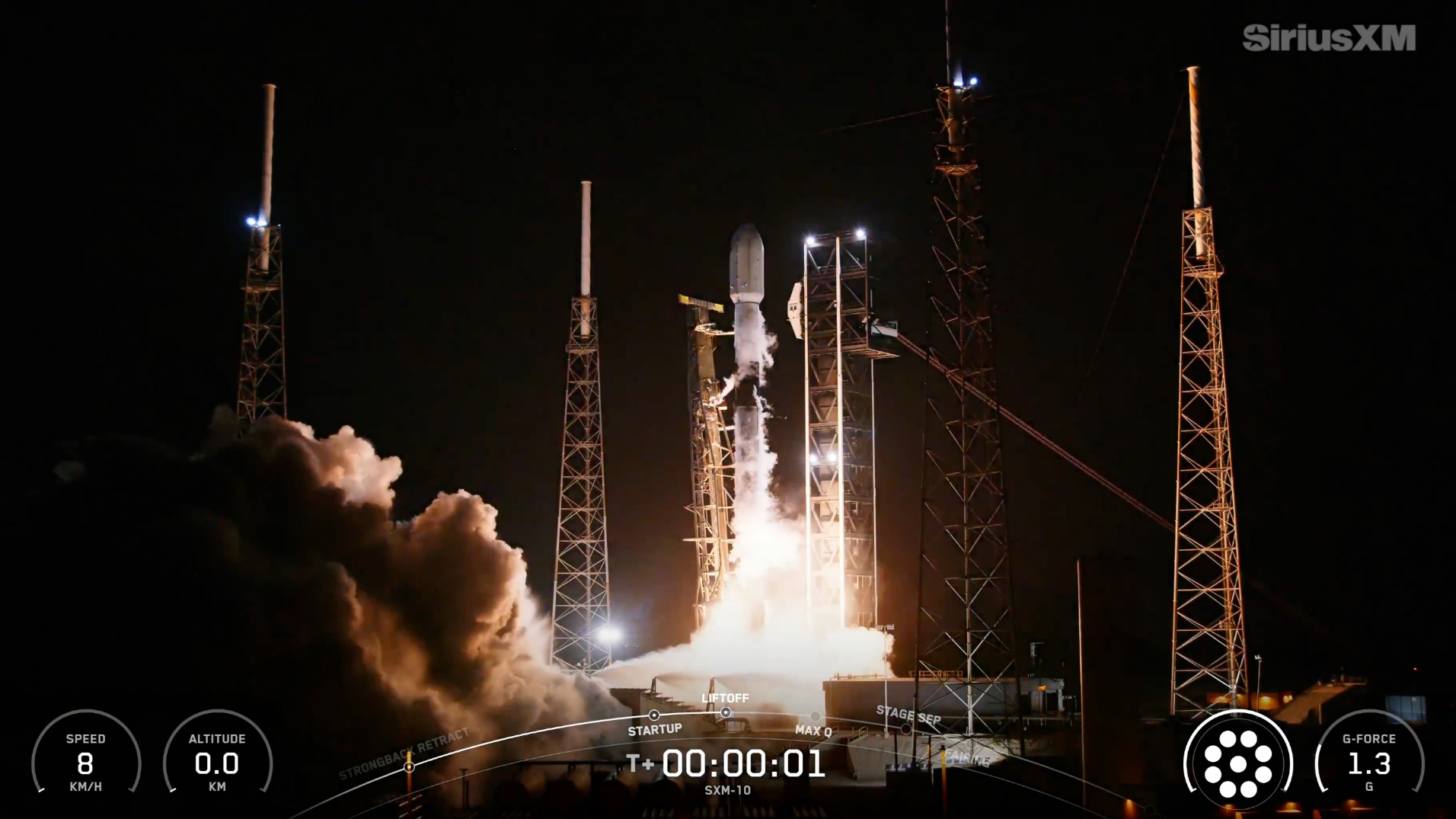Science of 'Star Wars': How Would Lightsabers, the Force & Hyperspeed Work?

Movies like the upcoming "Rogue One: A Star Wars Story" often blend science with fiction. To separate the two, a panel of scientists convened in Atlanta in September during Dragon Con to discuss the potential science of the overall "Star Wars" universe. Led by journalist Rachel Pendergrass, the speakers included astrophysicists Erin Macdonald and Roy Kilgard, engineer Andy Dykes and biologist Eric Spana.
Build a lightsaber
One of the first questions the panelists dove into was the science of lightsabers, the high-energy beams wielded by Jedi knights and their enemies in the films.
"That's why I got into physics — to make a lightsaber," said MacDonald, a systems engineer with Stellar Solutions who previously worked with the LIGO collaboration on gravitational waves. ['Rogue One: A Star Wars Story' in Pictures]
The panelists quickly agreed that the lightsabers were composed of high-energy lasers, which can vary significantly in how their radiation can penetrate material. The real problem with building your own lightsaber is creating a definite end point to the laser's travel.
"Building a lightsaber that keeps going forever isn't hard," Macdonald said. "It's stopping it" that's difficult.
Today, many physics labs host high-energy lasers with wavelengths across the electromagnetic spectrum. Signs on the labs' walls and doors caution that these rooms contain powerful equipment capable of causing serious injury.
"There are some really scary lasers in physics labs that I would not come near because it's death," Macdonald said. "Effectively, that's a lightsaber."
Get the Space.com Newsletter
Breaking space news, the latest updates on rocket launches, skywatching events and more!
She pointed out that many undergraduate students expect those lasers to be more like the on-screen weapons, and come away disappointed. Instead, the beam is often invisible unless smoke or some other material drifts into its path.
That's why the blaster bolt halted in midair in "Star Wars VII: The Force Awakens" probably wasn't a laser. If it had been, it wouldn't have been visible until it reached your eye. Instead, the panelists considered the possibility that it might be a clump of superheated plasma.
So, if lightsabers are some form of contained high-energy beam, what could hold it in place? The panelists speculated that perhaps the solution related to the Force, the fictional energy that permeates the "Star Wars" universe. Perhaps the Force somehow contained the beam, truncating its length into something Jedi could use to destroy their enemies, the panelists surmised. [Strange Cinema: Space.com's Favorite Offbeat Space Movies]
"Maybe that's why [Jedi] don't breed," speculated Dykes, an engineer at Intelsat and a former NASA mission analyst. The constant proximity of lightsabers could make reproduction far less likely, he said.
"Lightsabers are emitting radiation to destroy you? Don't hold [yours] between your legs," joked Kilgard, who studies high-energy astrophysics at Wesleyan University in Connecticut.
The power of the Force
The Force is the driving energy in the "Star Wars" series, giving both Jedi and Sith the ability to manipulate objects with their minds. The panelists quickly decided to ignore the biological cause of the Force introduced in the prequels — midi-chlorians, or microscopic life-forms that exist within all living cells and are essential to life — in favor of energy manipulation.
One of the first Force-related subjects they latched onto was the differences in ability exhibited by different characters in the "Star Wars" movies. Of all the Force-wielding characters, only people on the dark side seem to produce Force lightning. Perhaps the light side was equally capable of doing so but instead chose not to use such destructive measures, the panelists speculated. Dykes pointed out that Anakin Skywalker, the Jedi who went from the light side to the dark side, did exactly that, only creating lightning attacks after he became Darth Vader.
The scientists also discussed how one person may be gifted with the Force while others are not. They quickly dismissed the idea that it was passed down through genes alone. Although the "Star Wars" series centers around Anakin, his son Luke and his grandson (through Luke's sister Leia) Kylo Ren, the family seems to be an anomaly. Anakin incurred the wrath of the Jedi Council when he married Padmé Amidala, because Jedi were not allowed to marry. That strongly suggests that the Jedi ranks weren't replenished by the children of Jedi knights.
"It seems more like a contagion that you can catch and pass on to your offspring rather than a simple mutation — the Force as a disease," Pendergrass mused.
Faster than a speeding Wookiee
Faster-than-light travel is a key technology in the "Star Wars" universe, allowing Rebels and members of the Imperial fleet to travel across the galaxy at a rapid clip. As with most science fiction, the ability to race faster than the speed of light defies known laws of the universe.
"You can bend and manipulate space-time if you have enough energy to do that," Macdonald said. She suggested that perhaps the hyperdrive envelops "Star Wars" ships in a bubble of space-time. [Warp Drive More Possible Than Thought, Scientists Say]
However, Dykes pointed out that even moving at the speed of light, voyagers would be moving too slowly to travel as far as they do in the "Star Wars" universe. "You have to be traveling at several thousand or hundred thousand times the speed of light to traverse a large fraction of the galaxy in hours," he said. And it's not just people who appear to travel faster than the speed of light: Obi-Wan Kenobi feels the destruction of the planet Alderaan as soon as it happens, leading Kilgard to speculate that "the Force travels faster than the speed of light."
Evolution on other worlds
The planet Tatooine is a desert world, yet a major life-form on the planet is the large and hairy bantha, an elephant-size creature used to carry heavy loads. According to the "Star Wars" web resource Wookieepedia, the animals are native to Tatooine. As a biologist, Spana couldn't help but wonder how such a creature could evolve on an unlikely world.
Spana said he looked for plants in the original film, "Star Wars: Episode IV - A New Hope," before the computer-generated-imagery effects were added. He found none. This led him to speculate that perhaps the banthas feed differently than one might expect. He pointed out that the desert world clearly has enough moisture for farmers, such as Luke's uncle, to thrive. Perhaps the banthas could eat algae that might grow in the planet's sand, Spana speculated.
"That's how you make whales," Spana said. "Banthas are sand whales."
A similar line of thought could apply to the tauntauns found on Hoth, listed as native to that ice world by Wookieepedia. Spana said that lichens are also supposed to be native to the ice planet.
"With a good food chain, you end up with tauntauns and enough wampas to eat them," Spana said.
Follow Nola Taylor Redd on Twitter @NolaTRedd or Google+. Follow us at @Spacedotcom, Facebook or Google+. Originally published on Space.com.
Join our Space Forums to keep talking space on the latest missions, night sky and more! And if you have a news tip, correction or comment, let us know at: community@space.com.

Nola Taylor Tillman is a contributing writer for Space.com. She loves all things space and astronomy-related, and always wants to learn more. She has a Bachelor's degree in English and Astrophysics from Agnes Scott College and served as an intern at Sky & Telescope magazine. She loves to speak to groups on astronomy-related subjects. She lives with her husband in Atlanta, Georgia. Follow her on Bluesky at @astrowriter.social.bluesky
